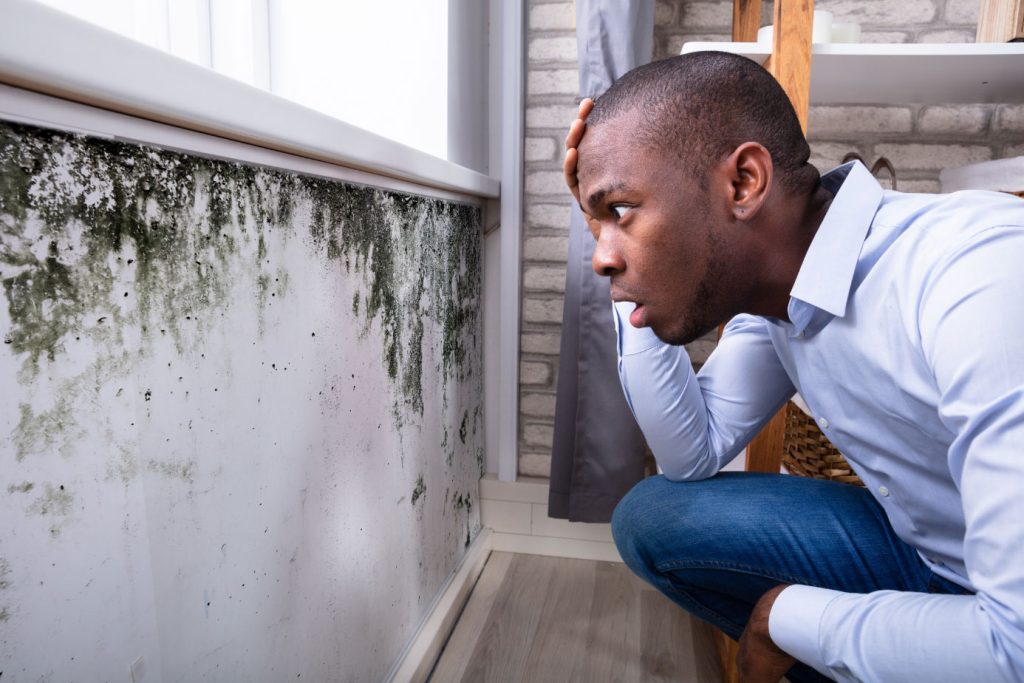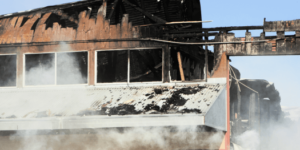
1. Leaking appliances
Leaking kitchen appliances, such as dishwashers, refrigerators, or icemakers, are common culprits that lead to mold growth in apartments.
These appliances often leak slowly and become a widespread problem before the tenant notices.
Encouraging your tenant to look into those dark spaces every now and then can save both of you from a difficult time.
More on preventing moldy appliances >>>
2. Plumbing problems
A burst pipe can cause devastating water damage for people in an apartment building. Depending on how and where the pipe breaks, a deluge of hundreds to thousands of gallons can flood tons of apartments.
Mold growth is nearly inevitable when massive surges of water soak ceilings, walls, and floors.
A rapid response from a water damage restoration company is critical to dry the premises, repair the damage, and prevent mold from spreading throughout the wet area.
3. Leaking water silo
Rooftop water storage tanks, also known as water silos or rooftop water towers, are found on some apartment buildings and are used to provide water pressure to apartments at a higher elevation than the public water supply infrastructure can service.
Containing thousands of gallons of water, a rooftop water tower can cause calamity to the apartments below if the silo bursts or leaks.
The influx of water creates the saturated conditions necessary for mold growth.
4. Leaks from fixtures in older buildings
Older apartment buildings may have radiators and these fixtures can leak.
You won’t quickly notice a small leak hidden in the ceiling or wall, so the first sign of mold growth may be the musty, earthy smell that heralds the presence of mold.
5. Humidity in the laundry room
A laundry room has a regular supply of heat and humidity from washing and drying laundry.
The presence of heat, humidity, and organic material makes the laundry room an ideal home for mold cultivation.
6. Condensation from the HVAC system
Condensation from your HVAC system is something to be extra worried about in the summer.
The system itself may not be a prime breeding ground for mold, but it’s an effective mode of transportation for mold spores to travel throughout the apartment building.
7. Clogged terrace drains
Rainwater may be forced to enter the apartments when leaves, grime, and debris clog terrace drains; the water damage and mold growth may become severe before anyone notices.
Keep these drains clear by servicing them at least twice a year.
8. Deteriorated building materials
In older buildings, worn-out materials are a concern and can lead to mold damage.
Brick buildings may have an issue with rainwater seeping through damaged mortar in between bricks.
If the water drips behind exterior walls, mold can grow quietly without anyone noticing until the infestation is advanced.
9. Flat roofs
Roofs with a flat surface can increase the risk of several problems including sagging, deterioration, and the pooling of water.
Water can make its way inside if the roof becomes compromised and encourage mold growth.
10. Failure to report water damage
Some tenants may be afraid to report water damage because they’re not sure if they’ll have to pay for the repairs.
However, telling the property manager about the damage as soon as possible is essential so the damage doesn’t get worse.
Here’s more on mold clauses in lease agreements >>>







